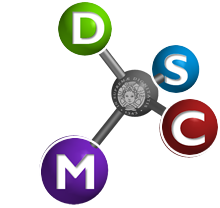
Contacts:
+393270237053
Supervisor(s):
Prof.Francesco Pineider
Title of the PhD project:
Rational design of transparent conductive oxide nanocrystals for high performance magnetoplasmonics.
Abstract of the PhD project:
Localised surface plasmon resonance (LSPR), a promising magneto-optic phenomenon with a myriad of potential applications is exhibited by nanoparticles of Gold, Silver, and semiconductor crystals. Presently, magnetic modulation of plasmonic resonance needs very high magnetic fields, for Gold and Silver nanoparticles. They have very small modulation by magnetic fields and LSPR in visible region of electromagnetic spectrum. There is a requirement of development of new nanomaterials which offer much higher magnetic modulation, with potential scope of modification of the LSPR by chemical methods. The development and implementation of semiconductor nanocrystals with aliovalent doping and are transparent in the visible region of electromagnetic spectrum and LSPR in near and mid Infra – Red region is very important in several fields. Usage of the nanocrystals of Transparent conductive oxides (TCOs) instead of noble metal nanoparticles bring great advancement in fields like touch screens, smart windows and refractometric sensing. The metal oxide complex crystals: Indium Tin Oxide, Aluminium doped Zinc oxide and Indium doped Cadmium Oxide are to be synthesized by the thermal decomposition method using metal oxide precursors. Analysis with particular attention on control of n-doping, morphology and optical-magnetooptical properties are to be performed. Magnetic co-doping using magnetic ions like Fe(III) and Co(III) is planned to be done on these nanocrystals. The analysis on the resultant nanocrystals will be done by using the techniques: Transmission Electron Microscopy, X-Ray Diffraction Analysis, Inductively Coupled Plasma-Atomic Emission Spectroscopy, Analysis of extinction spectra, magnetic circular dichroism spectroscopy from vibrational circular dichroism, and magnetic measurements (SQUID magnetometer). The thermal decomposition of precursors at high temperatures in high boiling organic solvents like octadecene is proved to be a great pathway to produce spherical, crystalline nanocrystalline particles with excellent plasmonic response. For this project, the effectiveness of doping is significant in all the synthesized nanocrystals. The method of synthesis is highly programmable to include the magnetic co doping into the nanocrystals of Aluminium doped Zinc oxide and Indium Tin Oxide as part of this investigation. This results in a better magnetically controlled plasmonic resonance. However, biological research to confirm the cytotoxicity and the suitability of the metal oxide nanocrystals could be an auxiliary study which could be added to final stages of the project.
Publications:
...
Oral communications at conferences:
...
Poster communications at conferences:
...
Other achievements:
...

